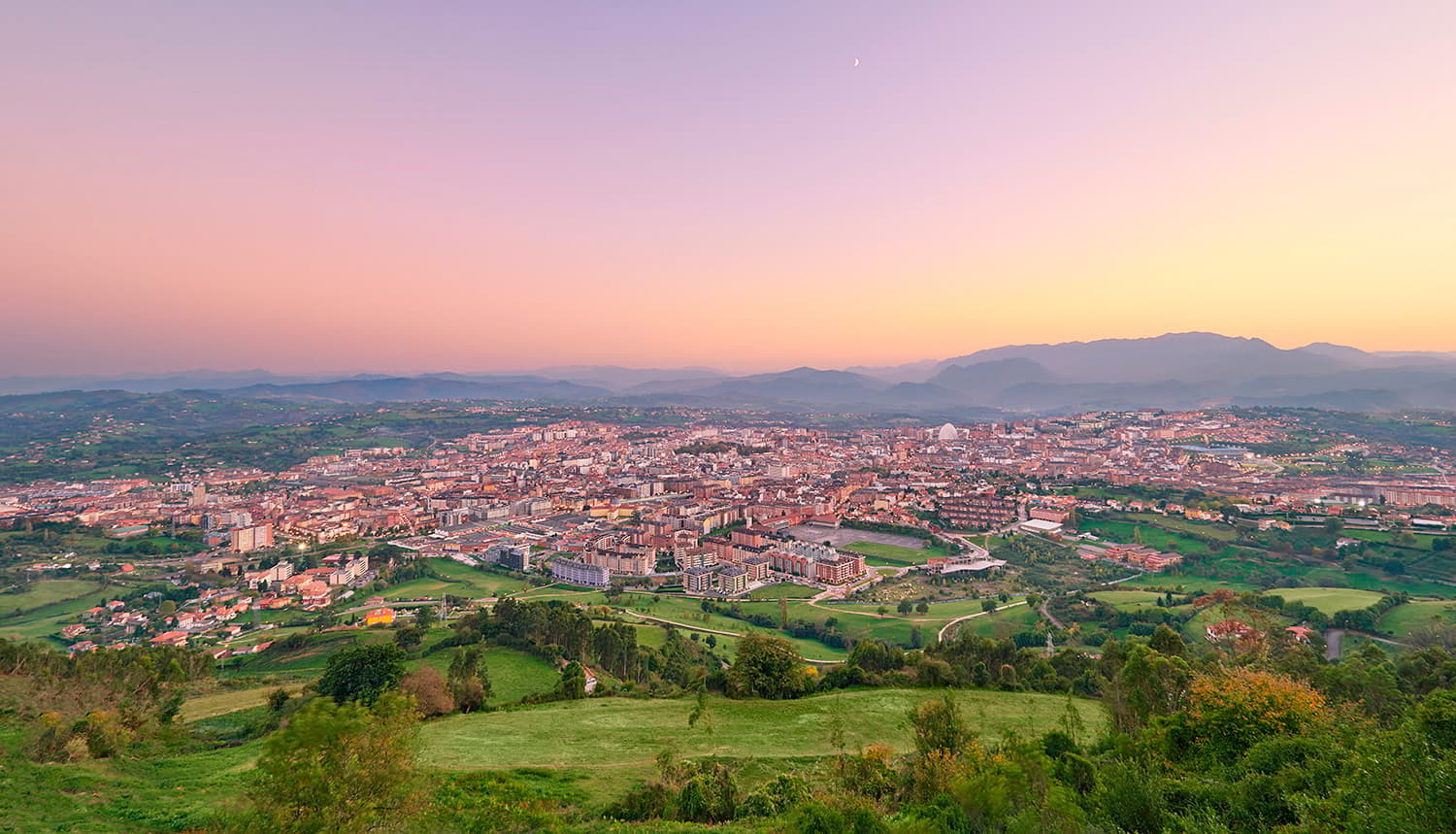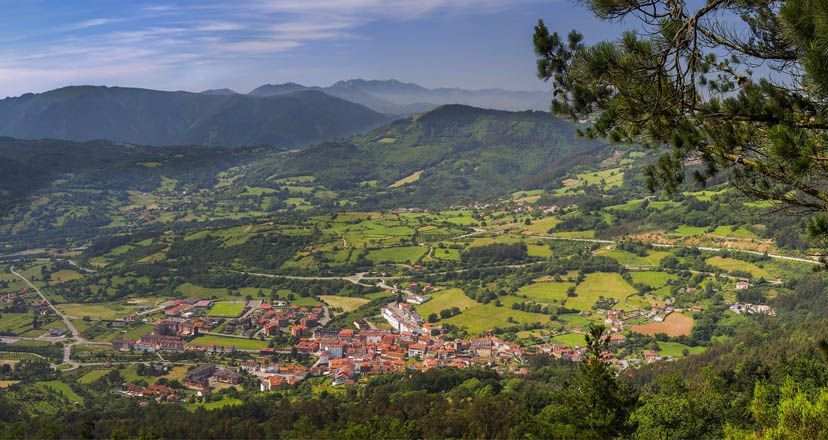Back Where the Camino de Santiago was born
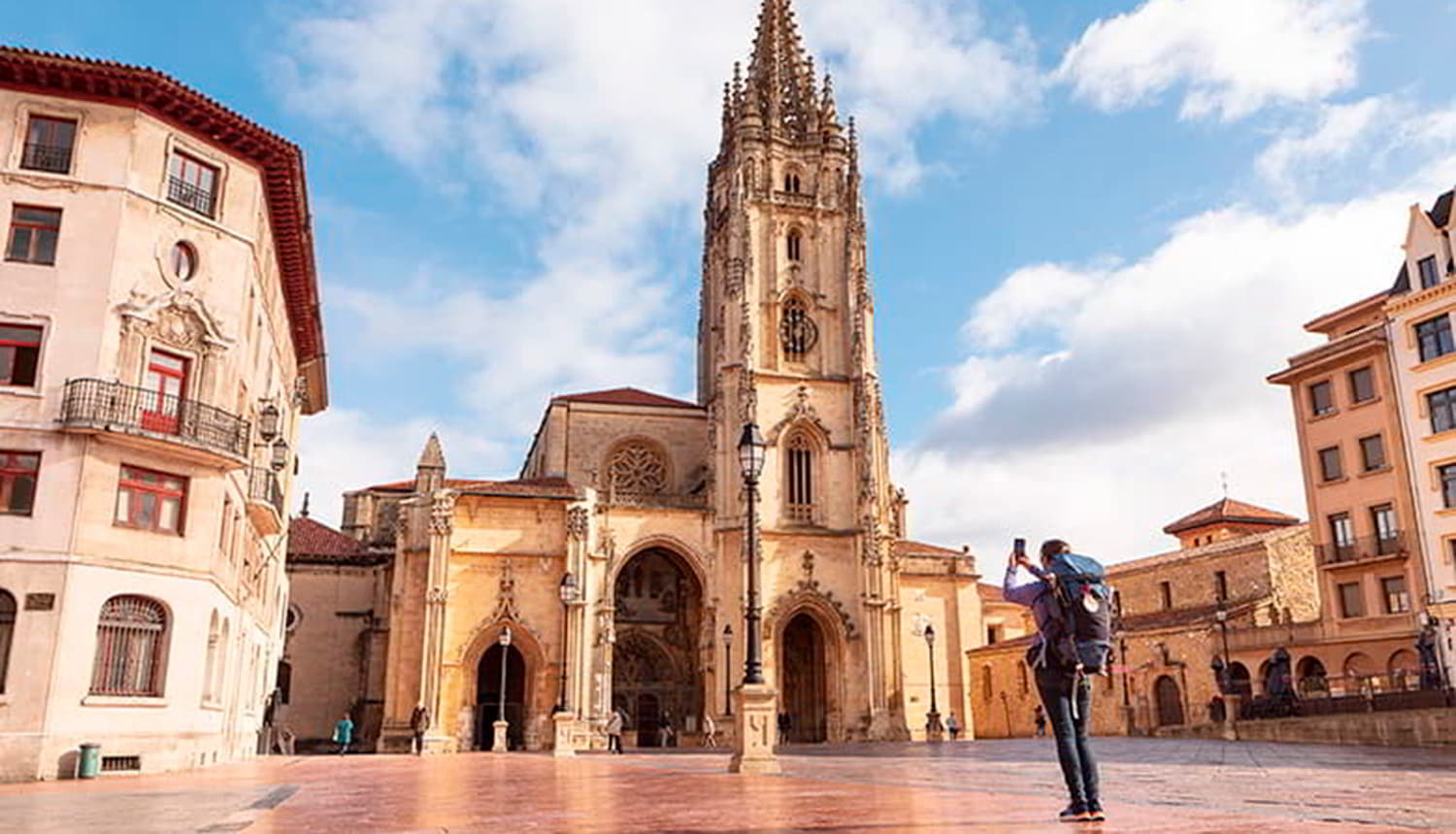
The historic place where the Camino de Santiago was born
Oviedo is the kilometre zero of the Way of St. James, playing a decisive role in the consolidation of the Jacobean routes since the Middle Ages.
Of all the qualities that Oviedo/Uviéu has, its status as kilometre zero of the Way of St. James has not always been mentioned. Beyond the famous medieval couplet- "Whoever goes to Santiago / and not to the Saviour / visits the servant / and not the Lord"-and relics that are as controversial as they are deeply rooted in the popular imagination, among which the Holy Shroud or the hydra of the wedding at Cana stand out, it is still necessary today to remember that the Asturian capital played a decisive role in the emergence and consolidation of the Jacobean routes that since the Middle Ages have crossed the northwest of the peninsula in search of the ancestral domains of the finis terrae.
An expanding Kingdom in the 9th century
It was the 9th century and the Kingdom of Asturias was in full expansion. The monarch, Alfonso II The Chaste, had moved the court from Pravia to Oviedo/Uviéu in order to found a new Toledo there and establish a royal see whose fortress would intimidate the Muslims who dominated more than half of the Peninsula. In this context, an emissary arrived in the city from Bishop Teodomiro, in charge of the diocese of Iria Flavia, bringing a portentous piece of news: in a forest in Gallaecia, a hermit named Paio had just discovered a tomb that housed the remains of the Apostle St. James himself. It was not long before the king and his men set out to see the discovery with their own eyes, thus giving rise to what was the first Pilgrim's Way to Santiago. That, at least, is what the legend tells. The reality may have been more prosaic, but no less fascinating. In such a context, the appearance of the body of an entire apostle in the territories of the Asturorum Regnum was a portentous political manoeuvre that put two objectives at a stone's throw: on the one hand, to unite a land in which small rebellions and internal struggles still surfaced from time to time; on the other, to obtain allies abroad and to present itself as a nucleus of power with the greatest of backing. The message was clear: if Santiago himself rests under our soil, it is clear that the divinity supports us.
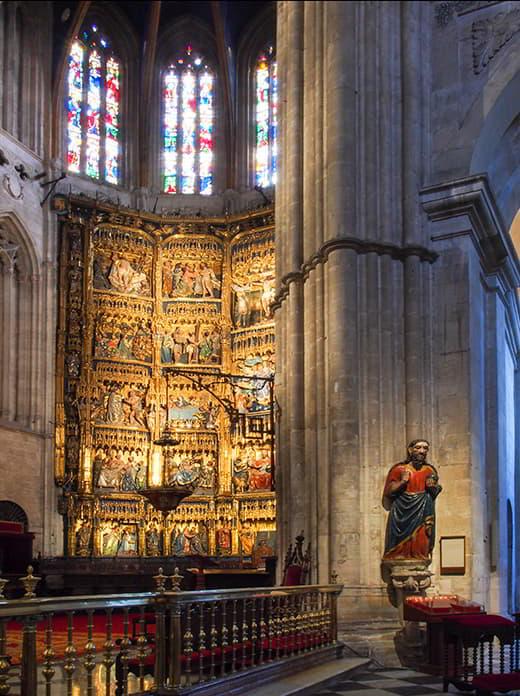
A first trip to Santiago between history and legend
To tell the truth, no one has left any written record of the exact route followed by King Chaste and his followers. However, it seems logical that they walked along the route of the Roman road that linked Lucus Asturum (today's Lugo de Llanera) with Lucus Augusti (Lugo) and that they connected there with the road that went to Bracara Augusta (Braga) passing through Iria Flavia, in what is today the municipality of Padrón in A Coruña. This, at least, was the route that those who decided to imitate him did cross to form what we know today as the Primitive Way. There were not many at first: Alfonso II limited himself to ordering the construction of a small funerary temple on the site and entrusting its custody to some monks, but the passage of time meant that the tomb and all the symbolism it contained attracted the attention of the masses of Christianity and became a magnet for pilgrims from all over the world.
But is Santiago really buried in Compostela? It is unlikely. The stories that refer to the preaching of the apostle in Hispania were concocted from the 5th century onwards, and it does not seem very credible that once his disciples had died, they would have set out from the East on the long boat trip that would have ended with his bones in Galicia. The excavations carried out under the cathedral of Santiago de Compostela showed the world a Roman necropolis, and the most heterodox readings assert that the one who really sleeps the eternal sleep under its Romanesque vaults is none other than the heretic Priscillian. Be that as it may, what matters is that throughout the Middle Ages the Camino became a formidable transmitter of ideas, currents and influences that put the peninsular kingdoms in constant communication with the rest of the continent.

The Primitive Way or the primordial essence of pilgrimages
The Primitive Way was frequented for several centuries as one of the safest routes to the apostolic sepulchre. Experts on the subject of the Jacobean routes certify that, even today, it is the one that has best preserved the original essence of the pilgrimages. In contrast to other itineraries which, due to their popularity, have become overcrowded and in some cases seem doomed to die of success due to overexploitation, the Primitive Way offers the opportunity to relive the recollection and peace of mind that had to embark the medieval pilgrims in a time when, with rudimentary cartography and without technological trickery, they were plunged into unknown territories dominated by beauty and silence. We will not be so frivolous as to say that little has changed since then, but it is worth noting that, in general terms, time has been quite respectful of these lands which, partly because they are far from contemporary centrality, have been able to maintain their peculiarities and have known how to do so.

The Primitive Way starts at the gates of the cathedral of Oviedo/Uviéu, right at the place where a plaque indicates that Alfonso II departed from there, to enter the southwest of the region along paths where some of the most memorable pages of the secret history of Asturias are written. From the first ramps that leave the capital towards San Lázaro de Paniceres, and until the Alto de El Acebo is crowned to then pass into the province of Lugo, travellers and pilgrims find on their way a wide range of corners, monuments and places that reconstruct hidden remnants of the past. The medieval strength of the Villa de Grau/Grado, the simplicity of the hidden church of La Doriga, the Romanesque and Baroque grandeur of the Monastery of San Salvador de Cornellana, the pomposity of the tomb of the Inquisitor Fernando de Valdés in the Collegiate Church of Salas or the monastic complex of Oubona, so paradigmatic, are some of the essential steps on a journey that is difficult to describe in words alone. Crossing the Puerto del Palo, at the summit of which the last documented coven in Asturias was held; following the so-called Route of the Hospitals, with the vestiges of the ancient remains of pilgrim care; or descending in free fall towards the Salime Reservoir, under whose waters lies the memory of the villages submerged by progress, constitutes, more than a simple excursion, an immersion in the murmur of a collective memory that only needs ears willing to listen to it.
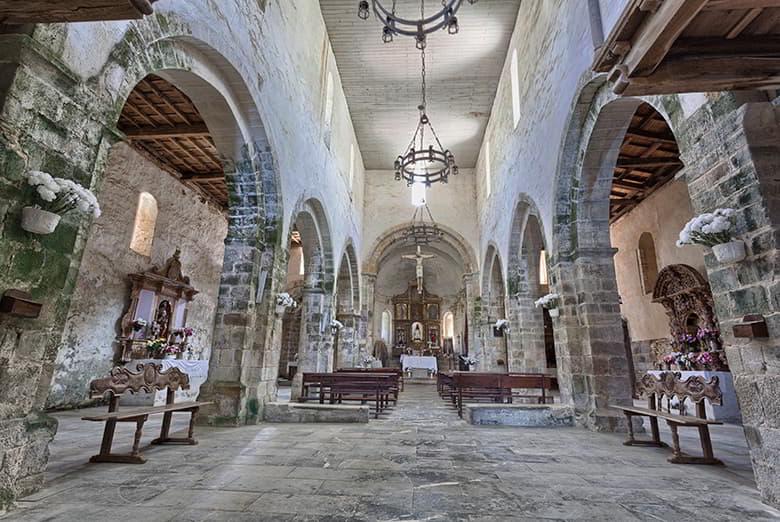
The biggest street in Europe according to Charles V
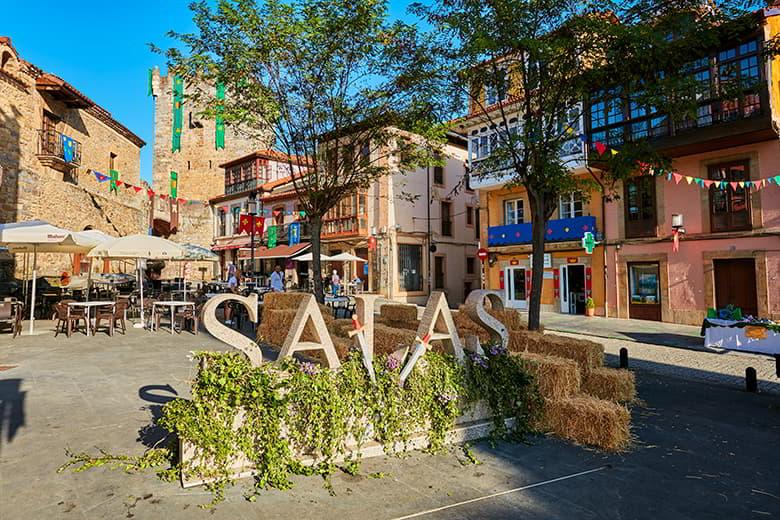
The Primitive Way, declared a World Heritage Site by UNESCO in July 2015, is an invitation to adventure and a call to heed the voice of who we are. Emperor Charles V said of the Jacobean routes that they were the main street of Europe. Johann Wolfgang von Goethe, with his romantic solemnity, wrote that the pilgrimages to Compostela had substantiated a certain continental consciousness. The truth is that it is risky to give monolithic descriptions because everyone will end up having their own impression of the journey. The Way was invented by Alfonso II, but it is made day by day by all those who dare to reconstruct it with their steps.
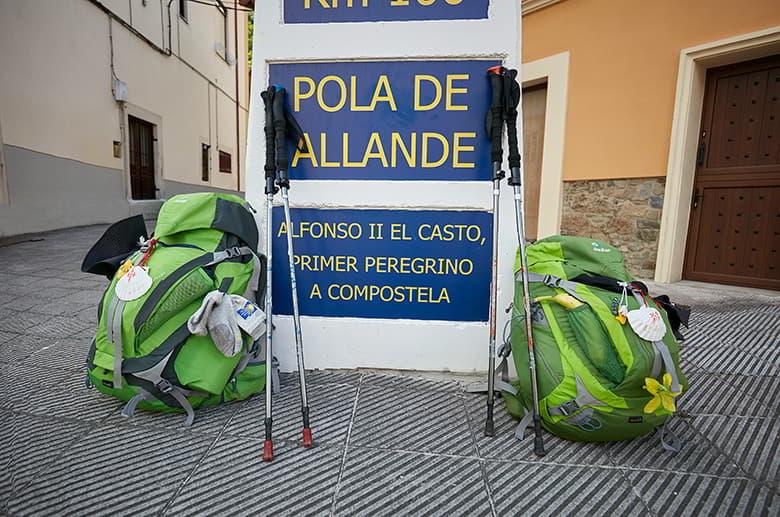
Don't overthink it. It is worth the effort and the whole world, or at least what you really need of it, fits comfortably in a rucksack. The rest will come in addition. Bon Camino!
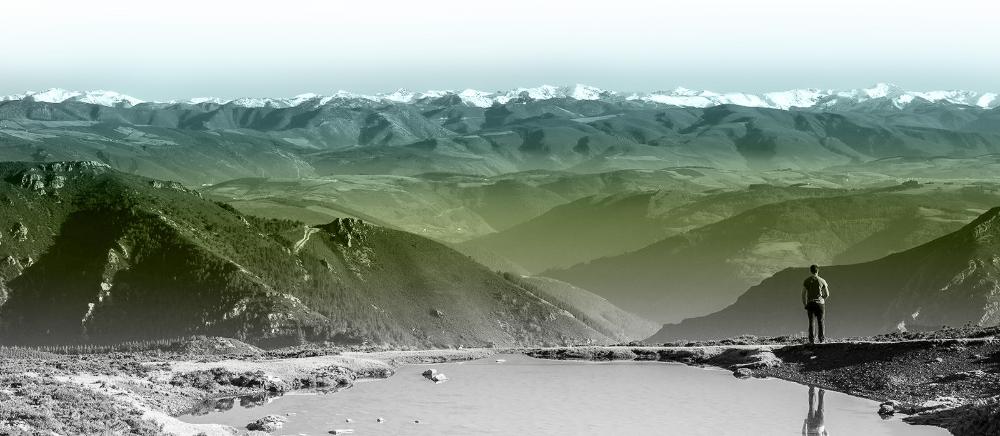
Subscribe to our newsletter and take advantage of offers, discounts, and news
Subscribe



